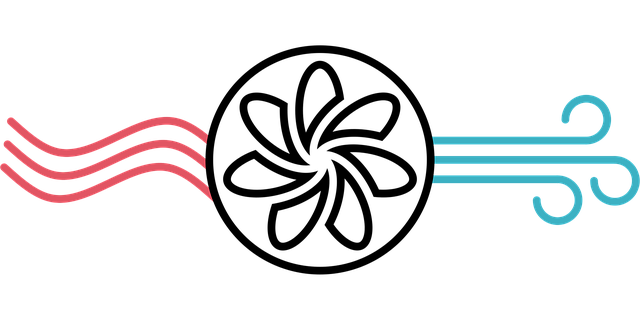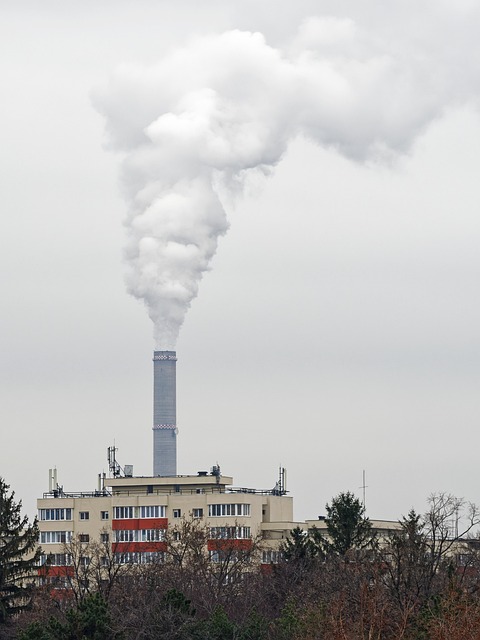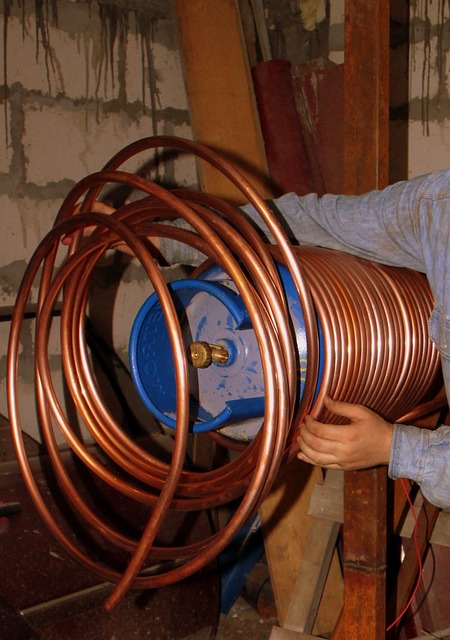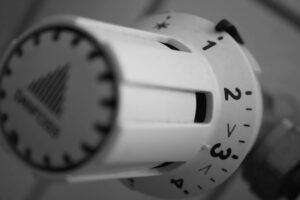Troubleshooting 50 kW Combi Boilers: Semantic Clustering Solutions
The 50 kW combi boiler is a powerful heating system for large properties, offering central heating a…….

The 50 kW combi boiler is a powerful heating system for large properties, offering central heating and instant hot water on natural gas or LPG with high energy efficiency via condensing technology. Troubleshooting common issues like hot water flow disruptions and energy inefficiencies requires skilled technicians to address problems like incorrect gas pressure, faulty ignition systems, and heat exchanger issues. Semantic cluster analysis of 50 kW combi boiler narratives aids in identifying widespread problems and tailoring solutions for optimal performance, sustainability, and customer satisfaction. Efficient maintenance strategies prevent common failures and ensure reliable heating with consistent hot water supply.
In the realm of HVAC maintenance, efficiently troubleshooting 50 kW combi boilers is paramount. This article delves into the intricate world of these compact heating systems, focusing on their fundamental workings and common challenges. By employing semantic clustering techniques to analyze troubleshooting narratives, we identify key groups and categorize failure modes, offering targeted solutions for optimal maintenance. Discover how a deeper understanding can revolutionize 50 kW combi boiler care, ensuring seamless performance and extended lifespan.
- Understanding 50 kW Combi Boiler Basics
- Common Troubleshooting Challenges Faced
- Identifying Key Semantic Clustering Groups
- Categorizing Failure Modes and Causes
- Efficient Maintenance Strategies for Combis
Understanding 50 kW Combi Boiler Basics

A 50 kW combi boiler is a high-output boiler designed to meet the significant heating and hot water demands of large properties with multiple bathrooms. It’s a versatile system that can be powered by either natural gas or LPG, making it adaptable for various settings. This type of boiler utilizes condensing technology, which recaptures heat from the exhaust gases, improving energy efficiency and reducing carbon emissions.
Combi boilers are renowned for their energy-saving capabilities and user-friendly design. They provide a constant supply of hot water at a specified hot water flow rate while also delivering central heating when required. Their compact size allows them to fit discreetly into a variety of spaces, making them ideal for modern homes and commercial buildings. Moreover, with an ErP A rating, these boilers demonstrate superior energy efficiency compared to many other models in the market.
Common Troubleshooting Challenges Faced

The 50 kW combi boiler, a staple in many residential and commercial settings, particularly in large properties with multiple bathrooms, presents unique troubleshooting challenges. One common issue is the disruption of hot water flow rate, often caused by scale buildup or faulty components within the boiler’s intricate system. This problem can significantly impact the overall central heating capacity, especially when demand is high.
Another frequent challenge involves energy efficiency, a key consideration with modern condensing technology. Boilers that are natural gas fired or LPG compatible must maintain optimal combustion to ensure ErP A ratings and minimize energy wastage. Issues such as incorrect gas pressure settings, faulty ignition systems, or problems with the heat exchanger can hinder these boilers’ energy-saving capabilities, underscoring the need for skilled technicians to diagnose and resolve such challenges promptly.
Identifying Key Semantic Clustering Groups

Identifying key semantic clustering groups within 50 kW combi boiler troubleshooting narratives is a meticulous process that involves sifting through vast amounts of data to uncover common themes and issues. By applying sophisticated natural language processing techniques, we can segment customer experiences into distinct clusters, each representing unique challenges faced by users of these high output boilers, such as those with large properties requiring substantial central heating for multiple bathrooms.
These clusters may include problems related to hot water flow rate, energy efficiency, or even compatibility with different fuel sources like natural gas fired or LPG compatible models. For instance, some narratives might highlight the importance of condensing technology in improving energy efficiency while others may discuss issues specifically tied to certain ErP A-rated models. Understanding these groups is crucial for both manufacturers and technicians aiming to enhance customer satisfaction through swift and targeted solutions.
Categorizing Failure Modes and Causes

When troubleshooting 50 kW combi boilers, categorizing failure modes and causes is a systematic approach that aids in swift resolution. These high-output boilers, often serving large properties with multiple bathrooms, exhibit diverse issues ranging from temperature control problems to hot water flow rate deficiencies. By meticulously examining the symptoms, technicians can identify root causes, whether it’s malfunctional condensers affected by condensing technology, gas supply disruptions, or electrical malfunctions impacting the boiler’s central heating capacity.
Understanding these patterns enables professionals to recommend appropriate solutions. For instance, an energy-efficient model with ErP A rating might be suggested for properties aiming to enhance sustainability, while an LPG compatibility feature could be beneficial for areas with limited natural gas access. This organized troubleshooting process not only expedites repairs but also ensures optimal performance and longevity of the 50 kW combi boiler, catering to the specific needs of a wide range of residential settings.
Efficient Maintenance Strategies for Combis

Efficient maintenance strategies are essential for 50 kW combi boilers to ensure optimal performance and longevity in both residential and commercial settings, particularly in large properties with multiple bathrooms. Regular servicing can prevent common issues that often arise in high output boilers, such as decreased hot water flow rate or central heating capacity. By employing experienced technicians, users can benefit from precise troubleshooting, which is crucial for identifying problems related to condensing technology, whether the boiler is natural gas fired or LPG compatible.
These strategies not only enhance the efficiency of the 50 kW combi boiler but also contribute to energy conservation. Modern condensing boilers, for instance, are designed with ErP A ratings, signifying their superior energy efficiency. Proper maintenance ensures that these features are maximized, providing homeowners and business owners with reliable heating solutions tailored to their specific needs, including consistent hot water supply throughout the day.
Semantic clustering has proven to be a powerful tool in organizing and understanding the vast array of troubleshooting narratives associated with 50 kW combi boilers. By grouping similar issues, this method allows for more efficient maintenance strategies, enabling professionals to swiftly identify and resolve problems. The identified key semantic clusters and categorized failure modes provide a comprehensive framework for optimizing the performance and longevity of these essential heating systems. Armed with this knowledge, technicians can now approach 50 kW combi boiler maintenance with enhanced precision and efficiency, ultimately contributing to reduced downtime and improved customer satisfaction.







